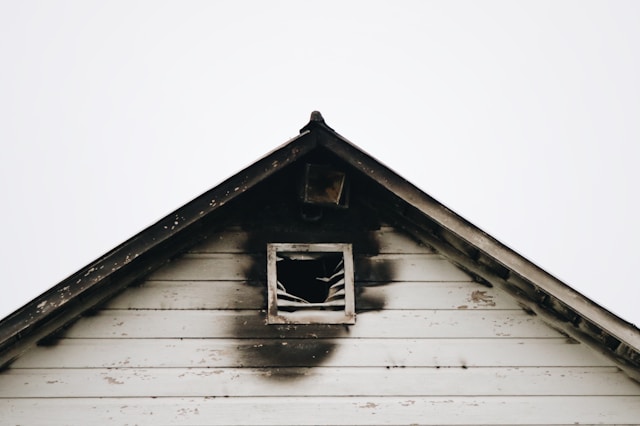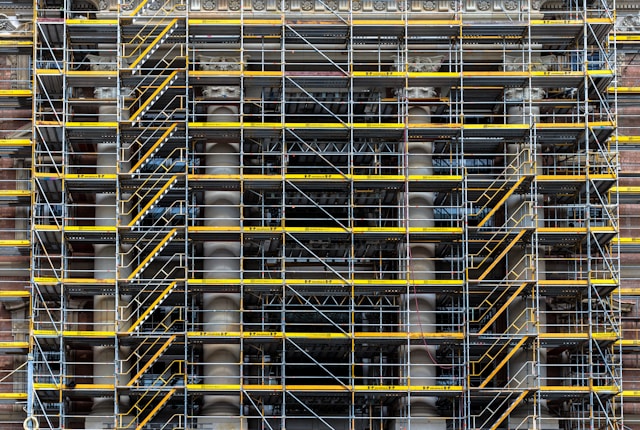Fires are devastating. They can destroy homes in minutes, leaving behind emotional and financial scars. But the good news is that many house fires can be prevented with the right precautions.
While no one can eliminate the risk entirely, taking the right steps can significantly reduce the chances of a fire.
This guide provides practical fire prevention tips from experts who have seen firsthand the destruction fires can cause.
1. Understand the Common Causes of House Fires
Knowing the common causes of house fires is the first step to prevention. Fires often start from things people use daily without much thought. For example, faulty wiring or overloaded electrical outlets are major culprits. Think about all the electronics plugged in at home—each one adds to the load. And then there’s cooking, which accounts for nearly half of all house fires. Leaving the stove unattended, even for a moment, can have disastrous consequences.
Space heaters, though convenient, are another big fire risk, especially when placed too close to flammable items like curtains or bedding. Cigarettes, candles, and even holiday decorations, like string lights, can ignite fires if not used carefully.
Understanding these common fire starters helps homeowners take action to avoid them. Simple changes, like unplugging devices when not in use or never leaving cooking unattended, can make a huge difference. Identifying these risks and addressing them before they become problems is key to keeping a home safe from fire.
2. Install and Maintain Smoke Alarms
Smoke alarms are one of the simplest yet most effective fire safety tools available. They provide early warnings, giving people precious time to escape a burning building. However, it’s not enough to just install them; maintaining them is equally important. Smoke alarms should be placed in every bedroom, outside sleeping areas, and on every level of the home, including the basement.
For homes with more than one level, interconnected alarms are a great idea. These alarms communicate with each other, so if one goes off, they all do, ensuring everyone in the house is alerted.
Testing smoke alarms once a month and replacing batteries at least once a year is a must. Many smoke alarms now come with 10-year lithium batteries, reducing the need for frequent battery changes. But even these need to be tested regularly. When the alarm beeps because of low battery, it shouldn’t be ignored. Replacing the battery right away is crucial.
Smoke alarms don’t prevent fires, but they do save lives by providing an early warning that something’s wrong. They offer those inside the home a chance to escape before it’s too late. Regular maintenance ensures they’re working when needed most. Smoke alarms might seem small, but they play a big role in keeping families safe from fire.
3. Create a Fire Escape Plan
A fire escape plan isn’t something to think about when a fire happens; it’s something to plan well in advance. Every household needs one, and everyone in the home should know it by heart. A good fire escape plan identifies two ways out of every room—usually a door and a window—and maps out a clear path to safety.
It also includes a designated meeting spot outside, away from the house, where everyone can gather after escaping. This ensures that everyone is accounted for and no one goes back into a burning building looking for someone who’s already outside.
Creating the plan is only the first step. Practicing it is just as important. Regular fire drills, at least twice a year, help everyone remember what to do in an emergency. Practicing the plan in the dark or with eyes closed can simulate the disorientation that smoke causes, making the drill more effective.
Children, especially, need to know what to do if they wake up to a smoke-filled room. Teaching them to crawl low under smoke, feel doors before opening them, and go directly to the meeting spot can be lifesaving.
No one wants to think about their home catching fire, but being prepared with a solid escape plan can make all the difference. It reduces panic, ensures everyone knows what to do, and can save lives when every second counts. A fire escape plan is a crucial part of any home’s fire safety strategy.
4. Fireproof Your Home: Tips for Minimizing Risk
Fireproofing a home doesn’t mean making it invincible, but it does mean taking steps to make it harder for a fire to start or spread. Start by using fire-resistant materials wherever possible. For instance, certain types of insulation and roofing are designed to withstand fire better than others.
When renovating or building, it’s worth investing in these materials, as they can provide extra protection. Consult with fire damage restoration services providers that can take a closer look at your setup and provide feedback.
Keeping flammable materials away from heat sources is another critical step. Curtains, papers, and cleaning chemicals should all be stored safely away from anything that could ignite them. Fire doors and windows can also be installed to slow the spread of a fire, giving occupants more time to escape and reducing the damage to the home.
For those living in areas prone to wildfires, clearing debris and vegetation from around the home is essential. Creating a defensible space by removing dry leaves, dead plants, and other flammable materials can prevent a fire from spreading to the house. Installing spark arrestors on chimneys and using fire-resistant plants in landscaping are other ways to protect the home from outdoor fires.
Fireproofing doesn’t make a home fireproof, but it does make it safer. By taking these precautions, homeowners can reduce the chances of a fire starting and, if one does, slow its spread. These steps, combined with other fire safety measures, create a safer living environment for everyone.
5. Safeguard Electrical Systems
Electrical fires are often the result of problems hidden behind walls, making them difficult to detect until it’s too late. That’s why maintaining the home’s electrical system is so important. Regular inspections by a licensed electrician can catch potential issues before they become dangerous. An electrician can identify worn-out wiring, overloaded circuits, and other problems that might lead to a fire.
In older homes, replacing outdated wiring and upgrading the electrical panel might be necessary. Modern appliances draw more power than older wiring systems were designed to handle, leading to overheating and, potentially, a fire. Circuit breakers that frequently trip or flickering lights are signs that the electrical system may need an upgrade.

Homeowners should also be careful about overloading circuits by plugging too many devices into a single outlet. Power strips with surge protectors can help, but they’re not a solution for an inadequate electrical system. Using the correct wattage in light fixtures is another simple but effective way to reduce fire risk.
By taking care of the home’s electrical system, homeowners can significantly reduce the chances of an electrical fire. It’s an investment in safety that can prevent a lot of damage and heartache down the road.
6. Be Careful with Cooking and Heating
Cooking and heating are two of the most common activities that lead to house fires. It’s easy to get distracted while cooking, but leaving the stove unattended, even for a few minutes, can lead to disaster. Grease fires, in particular, spread quickly and are difficult to extinguish. Keeping a close eye on what’s cooking, and having a fire extinguisher nearby, can prevent a small kitchen fire from turning into a big one.
Space heaters are another common fire hazard, especially during the colder months. These heaters should always be placed at least three feet away from anything that can burn, like curtains, bedding, or furniture. They should also be turned off when leaving the room or going to sleep.
Fireplaces, too, need to be used carefully. Regular cleaning and maintenance of the chimney are essential to prevent chimney fires, which can quickly spread to the rest of the house.
Taking these precautions with cooking and heating can go a long way in preventing fires. It’s about being aware of the risks and taking steps to minimize them. Fires don’t always happen because of something big; sometimes, it’s the small things, like leaving a pot on the stove or a space heater too close to the bed, that cause the most damage.
7. The Role of Professional Fire Safety Inspections
While homeowners can do a lot to prevent fires, there’s no substitute for a professional fire safety inspection. Fire safety experts are trained to spot risks that might be overlooked by the untrained eye. They can assess everything from the electrical system to the placement of smoke alarms and the materials used in the home’s construction.
These inspections should be done regularly, especially if the home is older or if there have been recent renovations. Fire safety experts can also provide valuable advice on how to improve the home’s fire safety. They might suggest installing additional smoke alarms, upgrading the electrical system, or making changes to the home’s layout to create a safer environment.
Getting a professional fire safety inspection is a proactive step that can catch problems before they lead to a fire. It’s an investment in peace of mind, knowing that the home is as safe as it can be. For those who have experienced a fire before, these inspections are even more important, as they can help ensure that the same thing doesn’t happen again.
8. Educate Your Family on Fire Safety
Everyone in the household plays a role in fire safety, and that’s why educating the family is so important. Children, in particular, need to understand the dangers of fire and what to do if one breaks out. Teaching them not to play with matches or lighters is a good start, but they also need to know practical steps, like how to escape from a burning house.
Teaching kids to stop, drop, and roll if their clothes catch fire can save their lives. They should also know how to call for help and when to do it. Practicing the fire escape plan with the whole family makes sure that everyone knows what to do, even in a panic.
Adults need to be just as prepared. Knowing how to use a fire extinguisher, when to evacuate, and where to meet outside are all critical pieces of information. Fire safety isn’t just about preventing fires; it’s also about being prepared if one happens. Educating the family ensures that everyone knows their role and can act quickly and safely if a fire breaks out.
Conclusion
Fire damage restoration services are essential, but preventing fires in the first place is the best way to protect a home and family.
By understanding fire risks, installing and maintaining smoke alarms, creating an escape plan, fireproofing the home, safeguarding electrical systems, and being cautious with cooking and heating, homeowners can significantly reduce their risk.
Regular fire safety inspections and educating the family complete the picture, ensuring that everyone knows what to do if a fire does occur.







